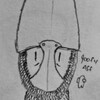HOME | DD
 FritzVicari — The Longbowmen hold the flanks, Agincourt 1415
by-nc-sa
FritzVicari — The Longbowmen hold the flanks, Agincourt 1415
by-nc-sa

#accurate #battle #digitalart #digitalpainting #historical #illustration #medieval #agincourt #artillustration #artworkdigital #historyart
Published: 2022-11-02 18:11:10 +0000 UTC; Views: 2297; Favourites: 52; Downloads: 0
Redirect to original
Description
(based on M. Bennet, Agincourt 1415):The battle of Agincourt started with an impasse.
The French army, having blocked the English retreat, was content with waiting for more reinforcements to arrive. They were counting on the English to try a breakthrough. On the other side of the field, the English army hoped that the French engaged them first.
In the late morning, around 11 PM, Henry finally broke the impasse, and the English army advanced towards the French, at a slow, steady pace. The archers, deployed on the flanks, were ordered to plant long, pointy stakes on the ground, to reinforce their position. Despite the slow deployment, the French didn't react until the first hail of arrows was loosened on them.
The English weren't moving according to the French plan and the cavalry was still pretty disorganized and not in full ranks. Despite this, the French cavalry charged the longbowmen.
The ploughed field in which the battle occurred was a muddy mess, so the charge never got enough momentum and french cavalry formation was messed up; the longbowmen were well entrenched while dense woods prevented any flanking manouver. And the arrows were killing the horses. For all this reasons, the charge failed. Only an handful of French were killed, including Guillaume of Saveuse [center], which was leading the charge, while most of the surviving knights and horses retreated chaotically towards the advancing french army.
Related content
Comments: 5

👍: 0 ⏩: 1

👍: 0 ⏩: 1

👍: 1 ⏩: 0

👍: 1 ⏩: 0

👍: 1 ⏩: 0

















